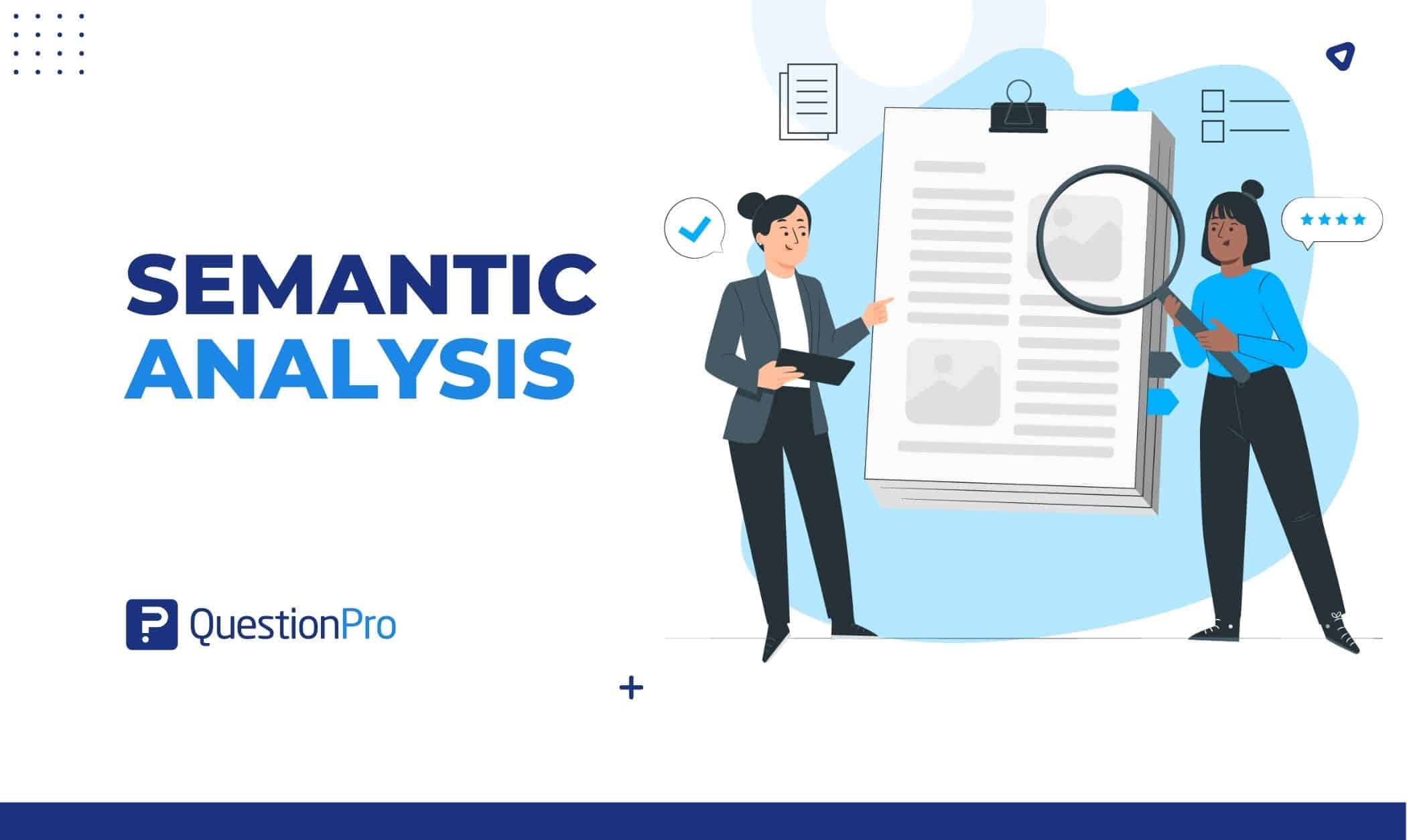 Reading Time: 4 minutes read
Reading Time: 4 minutes read
How would you feel if you found a chatbot that understood your emotional intent, a voice bot that understood your tone of voice, or a search engine that understood the purpose of your search?
Because of what a sentence means, you might think this sounds like something out of science fiction.
Well, you’re wrong! This technology is already being used to figure out how people and machines feel and what they mean when they talk. We are, talking about semantic analysis.
But:
- What is this technology, and what are the problems that come with it?
- What are the pros and cons, and how does it affect customer relations?
- And how can it be used as part of a plan to improve the customer experience?
Continue reading this blog to learn more about semantic analysis and how it can work with examples.
What is semantic analysis?
Semantic analysis, expressed, is the process of extracting meaning from text. Grammatical analysis and the recognition of links between specific words in a given context enable computers to comprehend and interpret phrases, paragraphs, or even entire manuscripts.
It is a crucial component of Natural Language Processing (NLP) and the inspiration for applications like chatbots, search engines, and text analysis using machine learning.
Tools based on semantic analysis can assist businesses in automatically extracting useful information from unstructured data, including emails, support requests, and consumer comments. We’ll go over its operation below.
How Semantic Analysis Works?
Semantic analysis, a natural language processing method, entails examining the meaning of words and phrases to comprehend the intended purpose of a sentence or paragraph.
This is often accomplished by locating and extracting the key ideas and connections found in the text utilizing algorithms and AI approaches.
Semantic analysis employs various methods, but they all aim to comprehend the text’s meaning in a manner comparable to that of a human. This can entail figuring out the text’s primary ideas and themes and their connections.
- One popular semantic analysis method combines machine learning and natural language processing to find the text’s main ideas and connections. This can entail employing a machine learning model trained on a vast body of text to analyze new text and discover its key ideas and relationships.
- Another strategy is to utilize pre-established ontologies and structured databases of concepts and relationships in a particular subject. Semantic analysis algorithms can more quickly find and extract pertinent information from the text by utilizing these ontologies.
Semantic analysis, in general, is a key method for assisting computers in comprehending the meaning of natural language text. It has numerous uses in fields including search engines, information retrieval, and machine translation.
In semantic analysis, lexical semantics is crucial because it enables computers to comprehend the connections between lexical elements (words, phrasal verbs, etc.):
- Hyponymy: It illustrates the connection between a generic phrase and its occurrences. In this context, hyponyms describe instances of the generic term hypernym.
- Homonymy: It can be explained as when two words have the same form or spelling but a completely distinct meaning.
- Polysemy: The Greek term “polysemy” implies “many signs.” It is a phrase or term that has a distinct yet connected meaning. In other words, while polysemy has the same spelling, its purposes are particular yet connected.
- Synonymy: This represents the relationship between two lexical elements with different forms but the same or similar meanings.
- Antonymy: It is the balanced relationship between two lexical elements about an axis throughout their semantic components.
- Meronomy: It is how text and words are put together in a way that makes sense and shows a part or member of something.
Semantic Analysis Examples
Semantic analysis can help businesses in many ways, such as when they are dealing with customer reviews, messages from a chatbot, or conversations with a call bot. Here are some actual examples:
- Example # 1: Uber and social listening
Uber’s strategy in terms of semantic analysis is as follows: when the company introduces a new version of its app, social networks and how users feel about it are carefully examined. We’re talking about “social listening” here, which is listening on social networks to find out how happy or unhappy users are.
“At Uber, we use this method daily to determine how our users feel about our changes. When we make a change, we immediately know what people like and what needs to be changed.”
Krzysztof Radoszewski is the Eastern and Central Europe Marketing Lead at Uber.
- Example # 2: Hummingbird, Google’s semantic algorithm
Semantic analysis systems are used by more than just B2B and B2C companies to improve the customer experience. Google made its semantic tool to help searchers understand things better.
Google’s Hummingbird algorithm, made in 2013, makes search results more relevant by looking at what people are looking for.
This algorithm also improves natural or organic referencing (SEO) and helps companies that can benefit from putting quality content on the pages of their website. They will be linked better with keywords that are “semantically” relevant!
Conclusion
If combined with machine learning, semantic analysis lets you dig deeper into your data by making it possible for machines to pull purpose from an unstructured text at scale and in real time.
Powerful machine learning tools that use semantics will give users valuable insights that will help them make better decisions and have a better experience.
QuestionPro is survey software that lets users make, send out, and look at the results of surveys. Depending on how QuestionPro surveys are set up, the answers to those surveys could be used as input for an algorithm that can do semantic analysis.




















